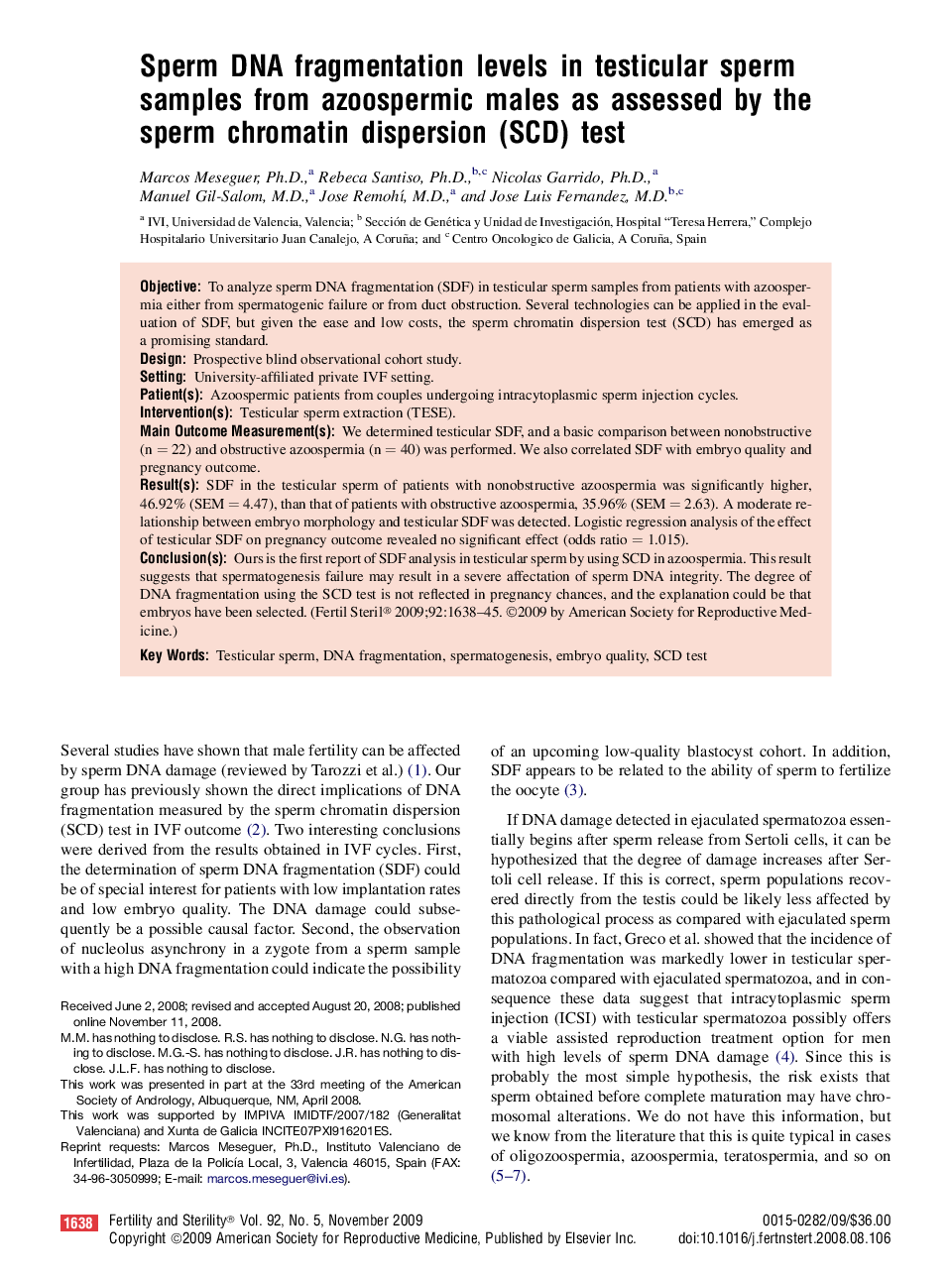| Article ID | Journal | Published Year | Pages | File Type |
|---|---|---|---|---|
| 3941069 | Fertility and Sterility | 2009 | 8 Pages |
ObjectiveTo analyze sperm DNA fragmentation (SDF) in testicular sperm samples from patients with azoospermia either from spermatogenic failure or from duct obstruction. Several technologies can be applied in the evaluation of SDF, but given the ease and low costs, the sperm chromatin dispersion test (SCD) has emerged as a promising standard.DesignProspective blind observational cohort study.SettingUniversity-affiliated private IVF setting.Patient(s)Azoospermic patients from couples undergoing intracytoplasmic sperm injection cycles.Intervention(s)Testicular sperm extraction (TESE).Main Outcome Measurement(s)We determined testicular SDF, and a basic comparison between nonobstructive (n = 22) and obstructive azoospermia (n = 40) was performed. We also correlated SDF with embryo quality and pregnancy outcome.Result(s)SDF in the testicular sperm of patients with nonobstructive azoospermia was significantly higher, 46.92% (SEM = 4.47), than that of patients with obstructive azoospermia, 35.96% (SEM = 2.63). A moderate relationship between embryo morphology and testicular SDF was detected. Logistic regression analysis of the effect of testicular SDF on pregnancy outcome revealed no significant effect (odds ratio = 1.015).Conclusion(s)Ours is the first report of SDF analysis in testicular sperm by using SCD in azoospermia. This result suggests that spermatogenesis failure may result in a severe affectation of sperm DNA integrity. The degree of DNA fragmentation using the SCD test is not reflected in pregnancy chances, and the explanation could be that embryos have been selected.
